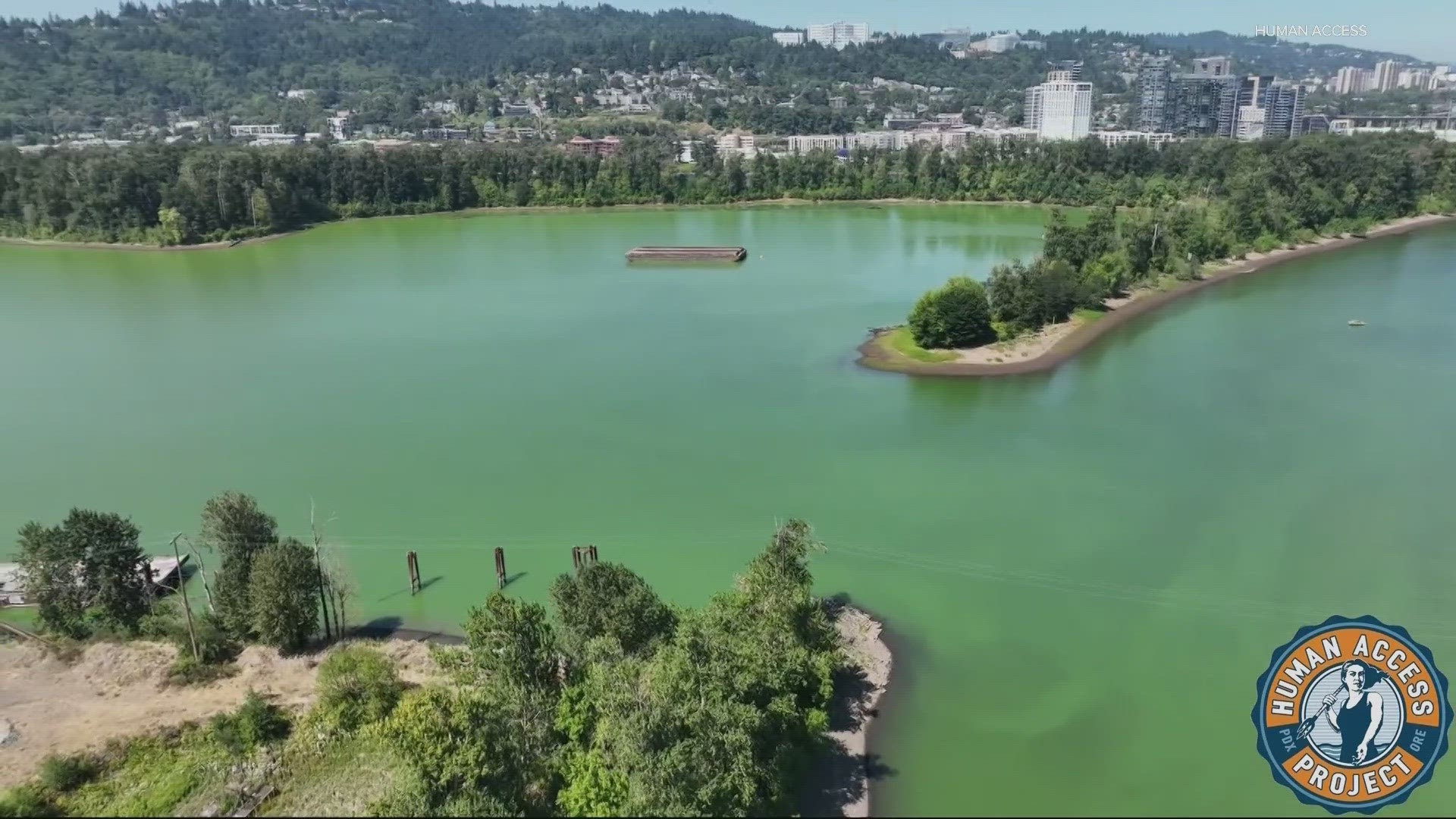PORTLAND, Oregon — Toxic algae blooms in the Willamette River have become a recurring summer problem in recent years, making the normally swimmer-friendly waterway unsafe for Portlanders. The phenomenon is caused in part by warming temperatures and an abundance of river nutrients, but there's a third factor that might have a relatively straightforward solution: stagnant water.
Dr. Desiree Tullos, a professor of water resources engineering at Oregon State University, has spent the past five years volunteering her time to study the annual algae bloom plaguing the Ross Island Lagoon and the Willamette River. She said the stagnation problem is largely man-made.
"The lagoon used to be three separate islands," Tullos explained. "The river flowed through those islands, and then over a century ago or so, people started mucking around in the river. They built an embankment, they extracted a bunch of gravel. And essentially what that did, it created a really deep hole in the river that was just barely connected to the river, through a lagoon."
The hole is now full of mostly stagnant water, which gives the algae more of a chance to get a foothold. Algae blooms contain cyanotoxins, which are harmful to native salmon, dangerous to people and potentially fatal to pets if ingested.
"The Ross Island Lagoon is a pond inside a river. It is now a harmful algae bloom factory, that’s really impacting all of Portland,” said Willie Levenson, founder of the nonprofit Human Access Project.
Levenson has spent spent 13 years advocating for the Willamette River, and for improving public access to the waterway.
"The vison of Human Access Project is a city in love with it’s river, and it’s really hard to have pride in your river when it turns green in the summer time, and you're afraid to bring your dogs and swim," Levenson said.
After five years of hard work, with help from the Oregon Department of Environmental Quality, the Oregon Health Authority and other agencies, a viable path forward has been identified.
"So we've been using numerical models, a lot of field studies who compare these different alternatives. That's how we got to this conclusion that a flushing channel is likely to be most effective and produce the greatest benefits over the long term with the least amount of maintenance," Tullos said.
It's a seemingly simple idea — cut a hole in the embankment to restore some of the river’s natural flow — but it’s still going to take some work.
"It is a complex solution, but it is one that we have confidence will help really knock back the bloom," Tullos said.
"This effort by the Human Access Project and Oregon State University is so vital," said Senator Jeff Merkley, who helped secure $100,000 in funding for further study.
If the Fiscal Year 24 community-initiated project is signed into law, funding will be used to experiment with channel dimensions and locations, estimate the effect of channel configurations on algae biomass, and study other vital engineering considerations.

